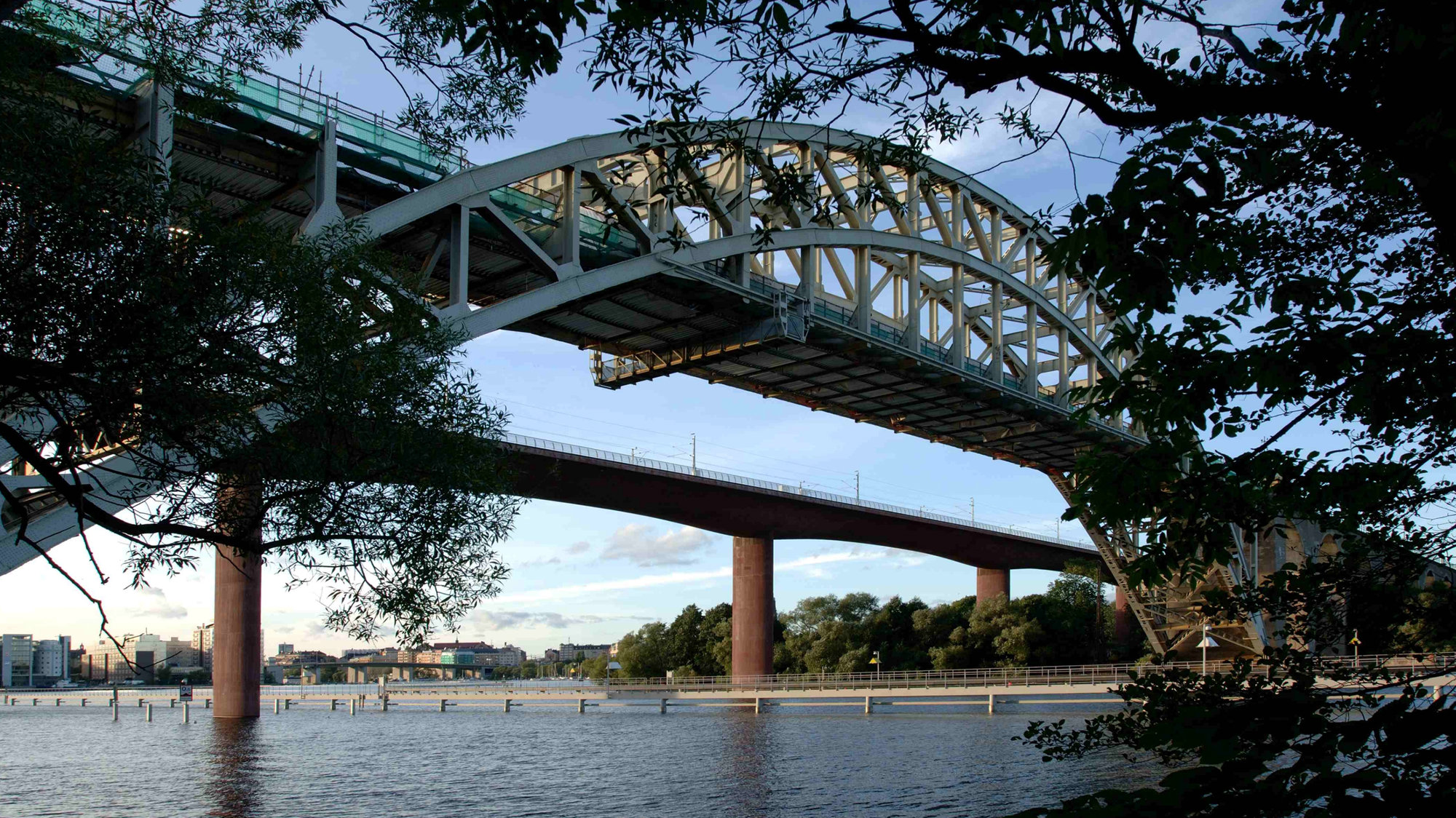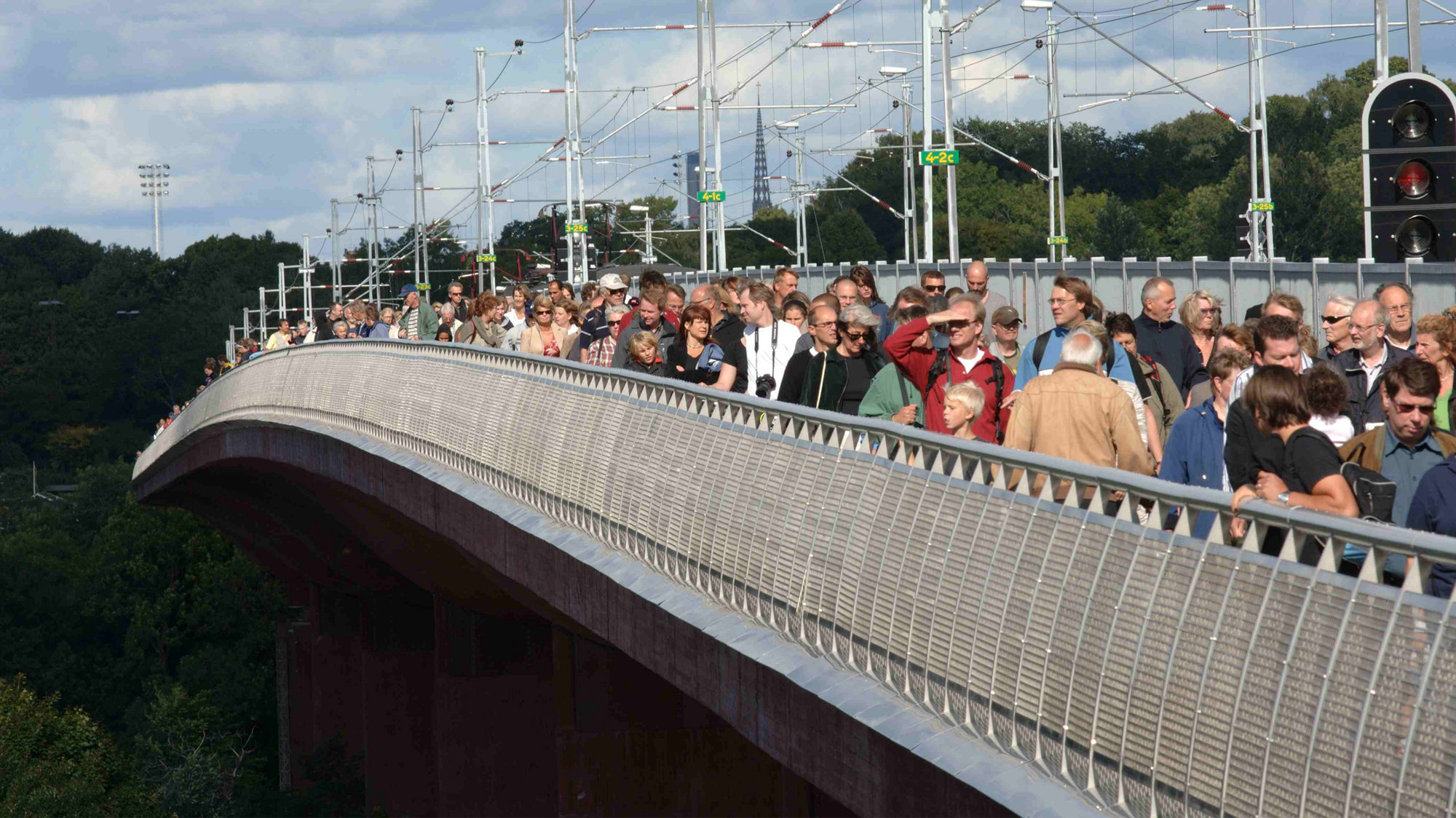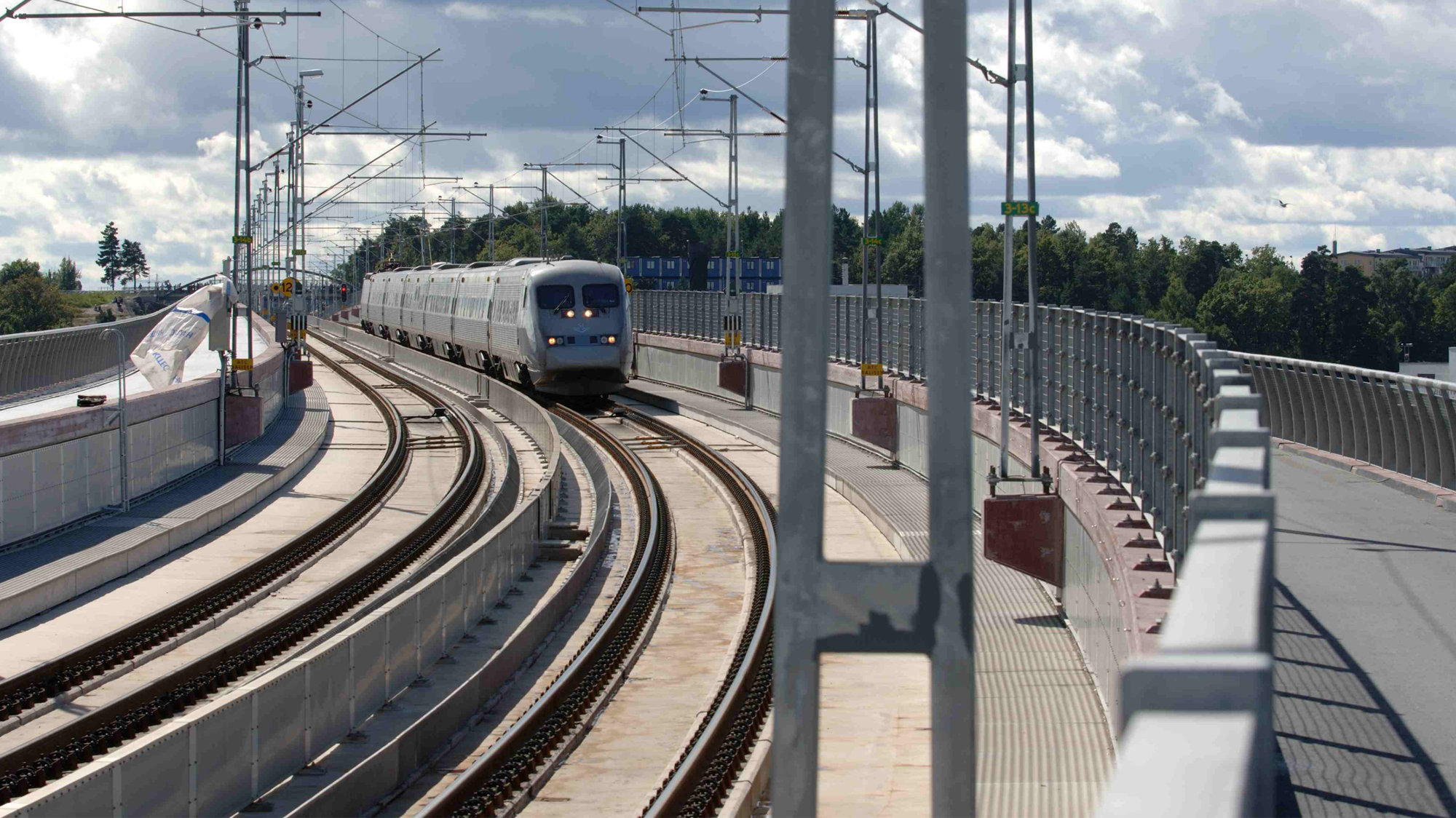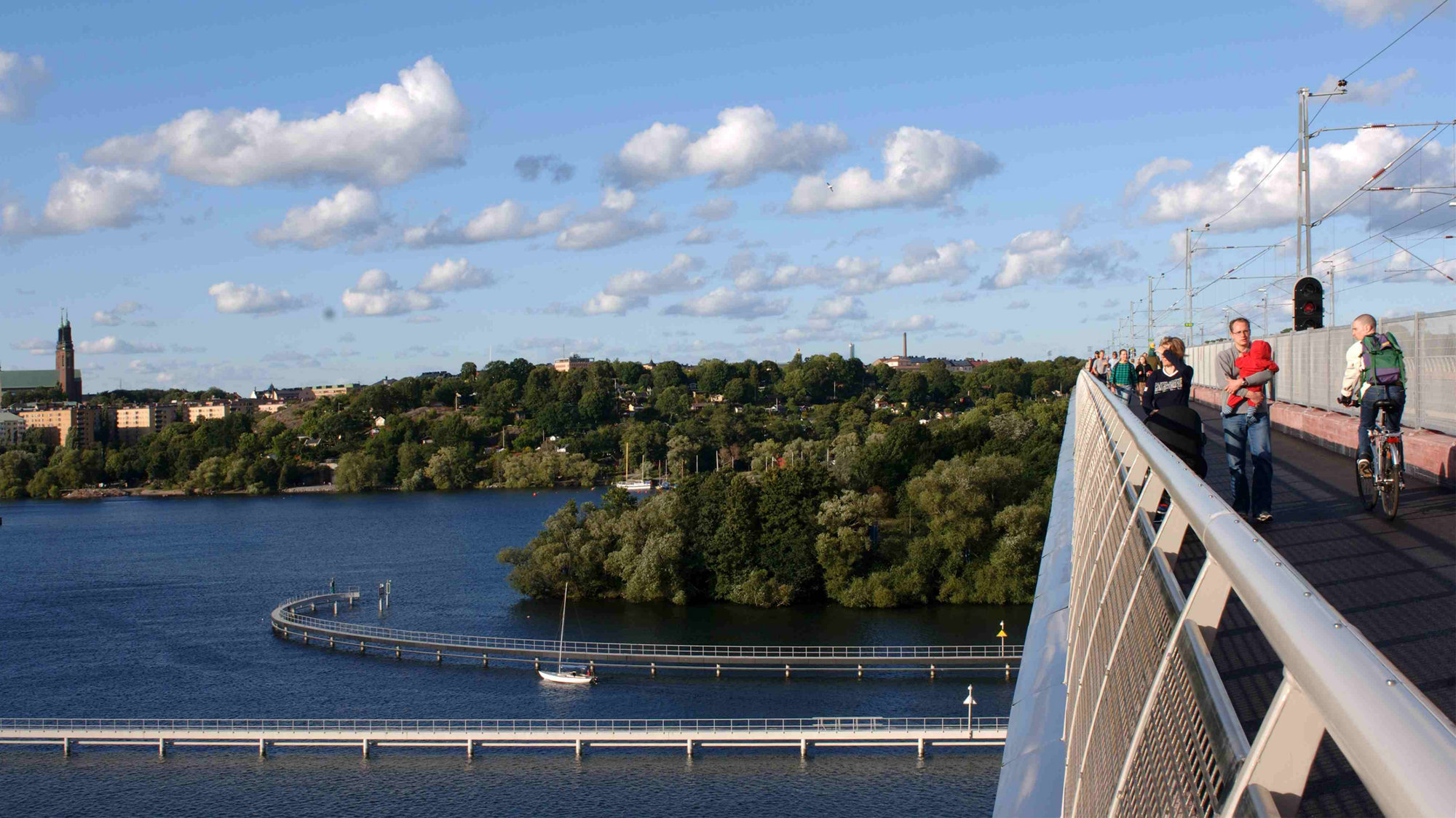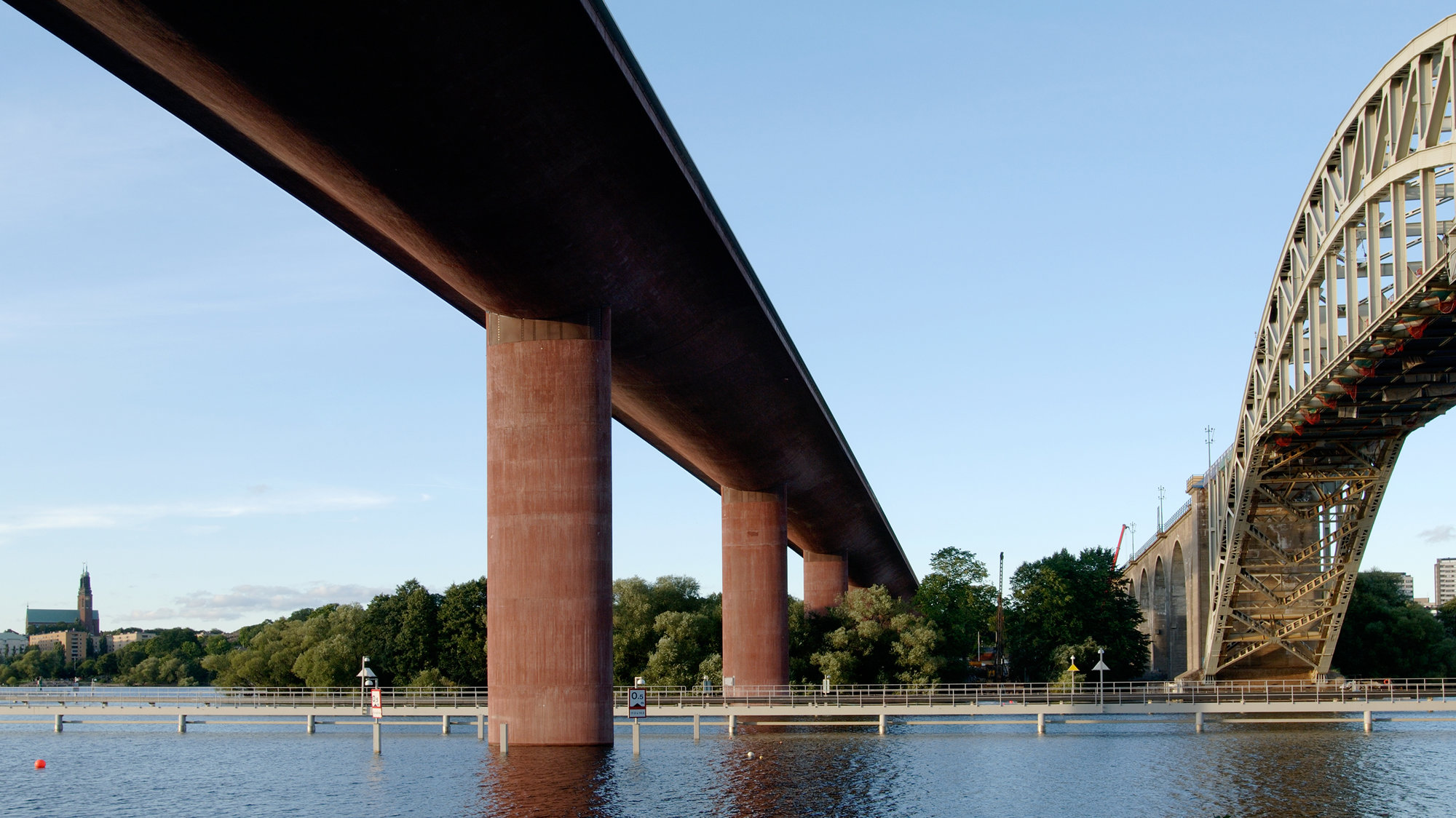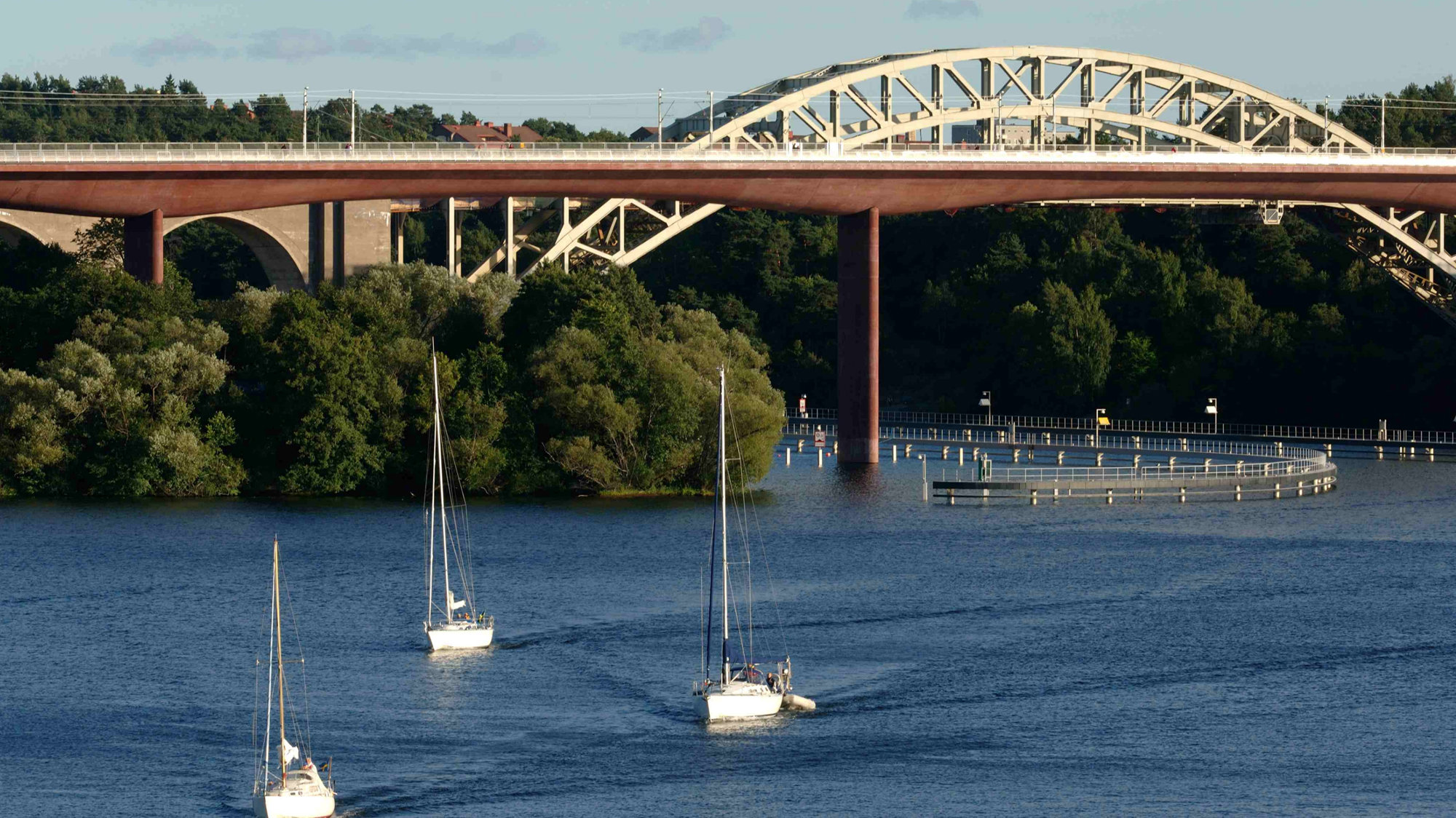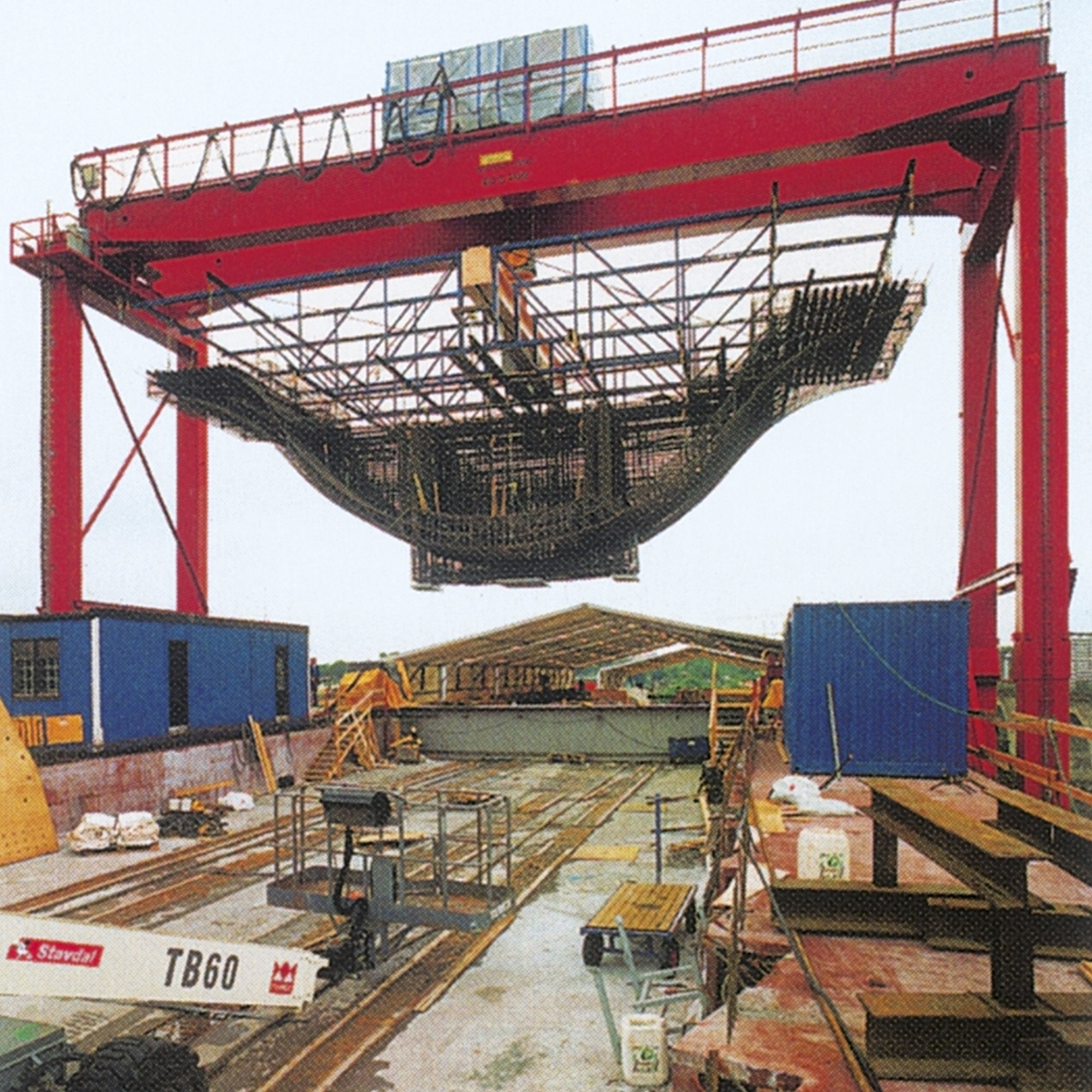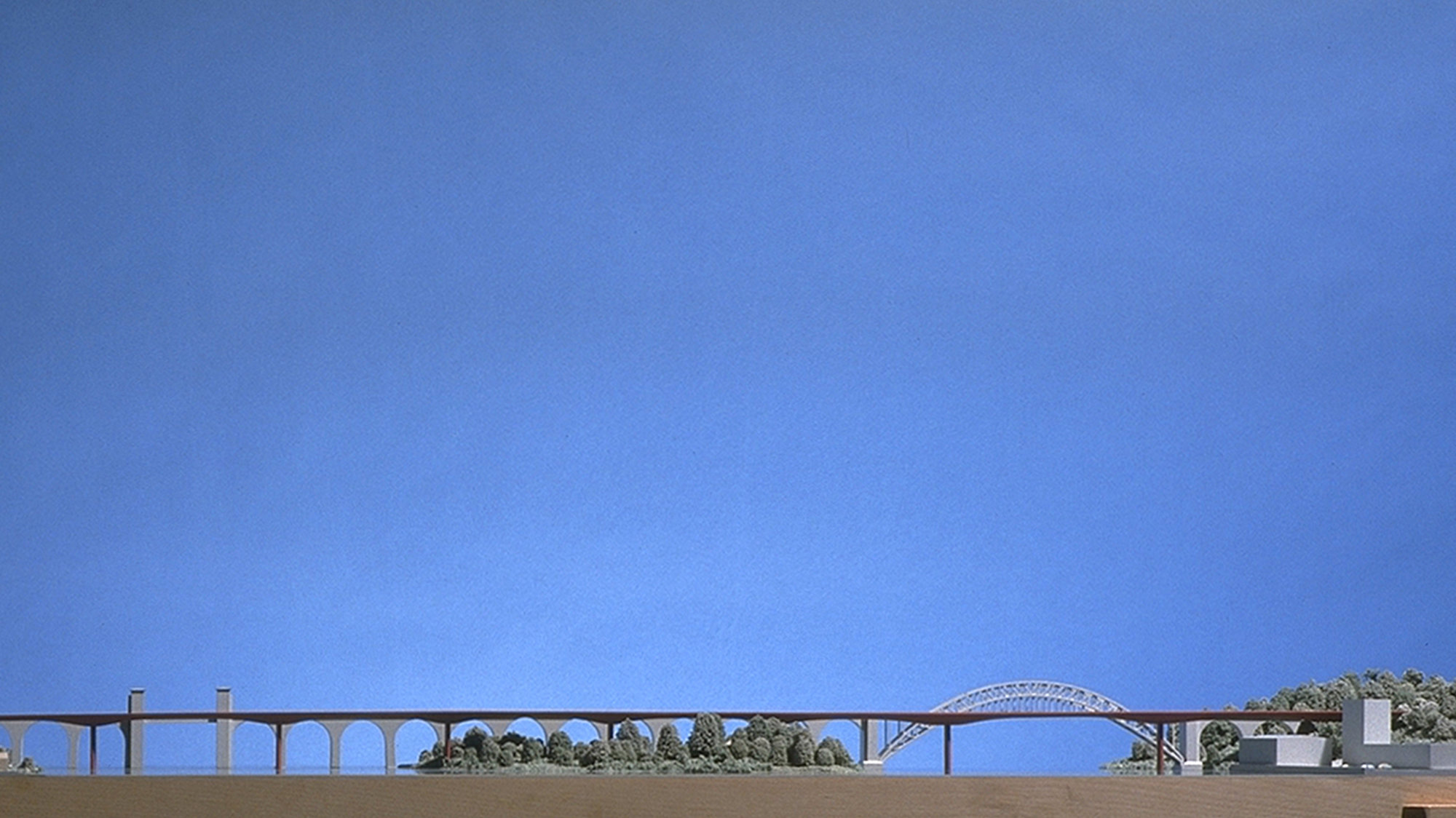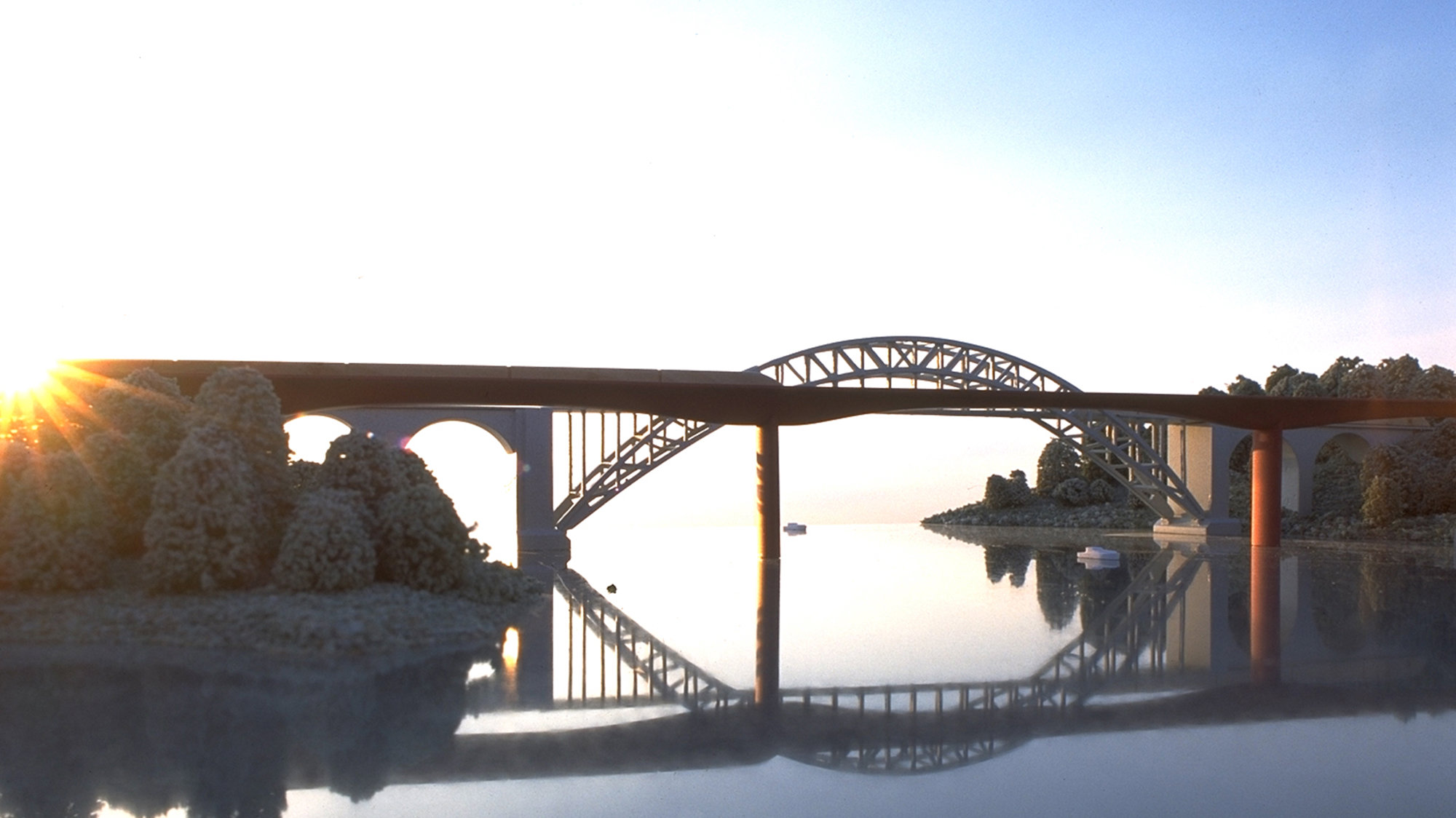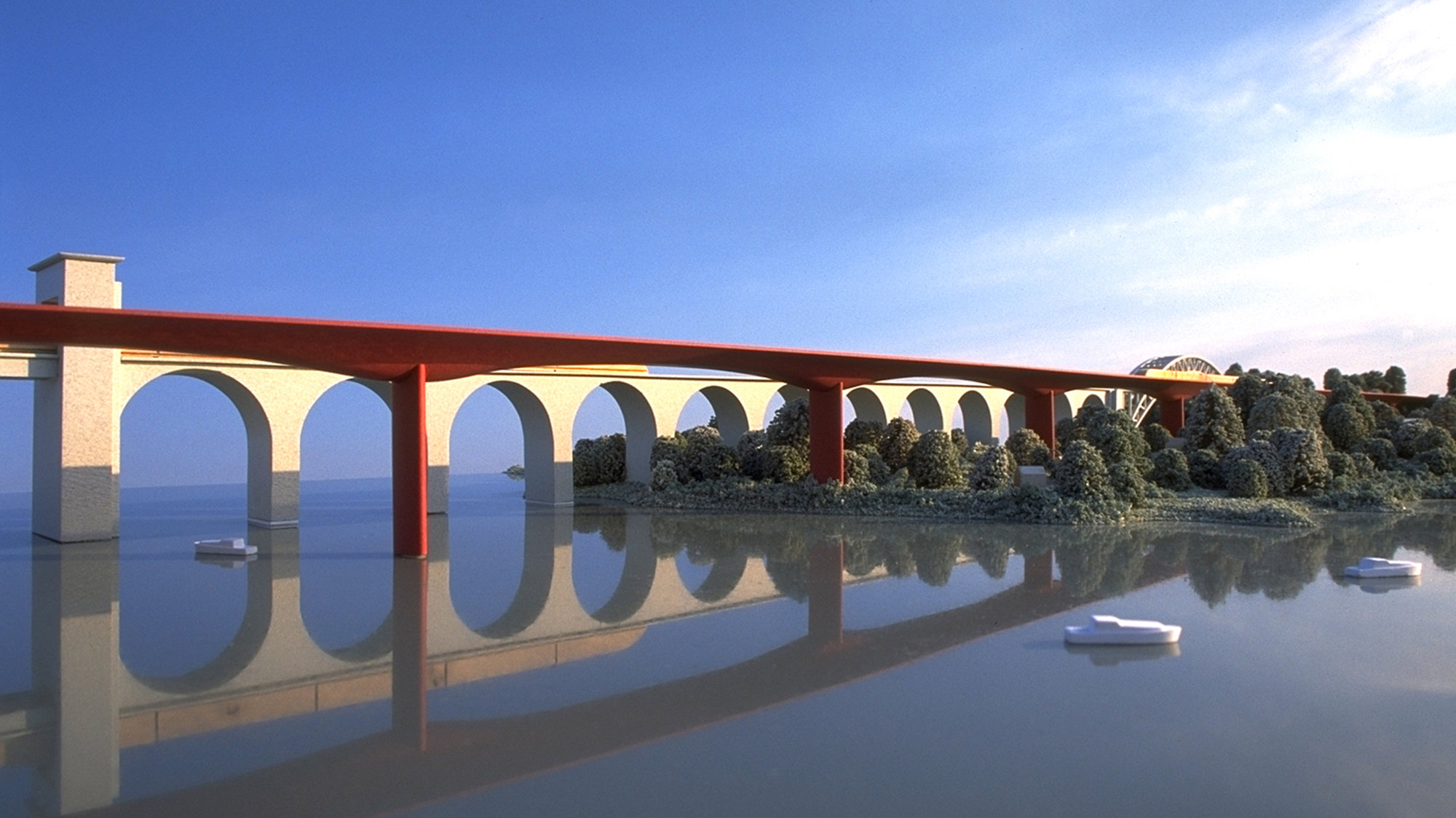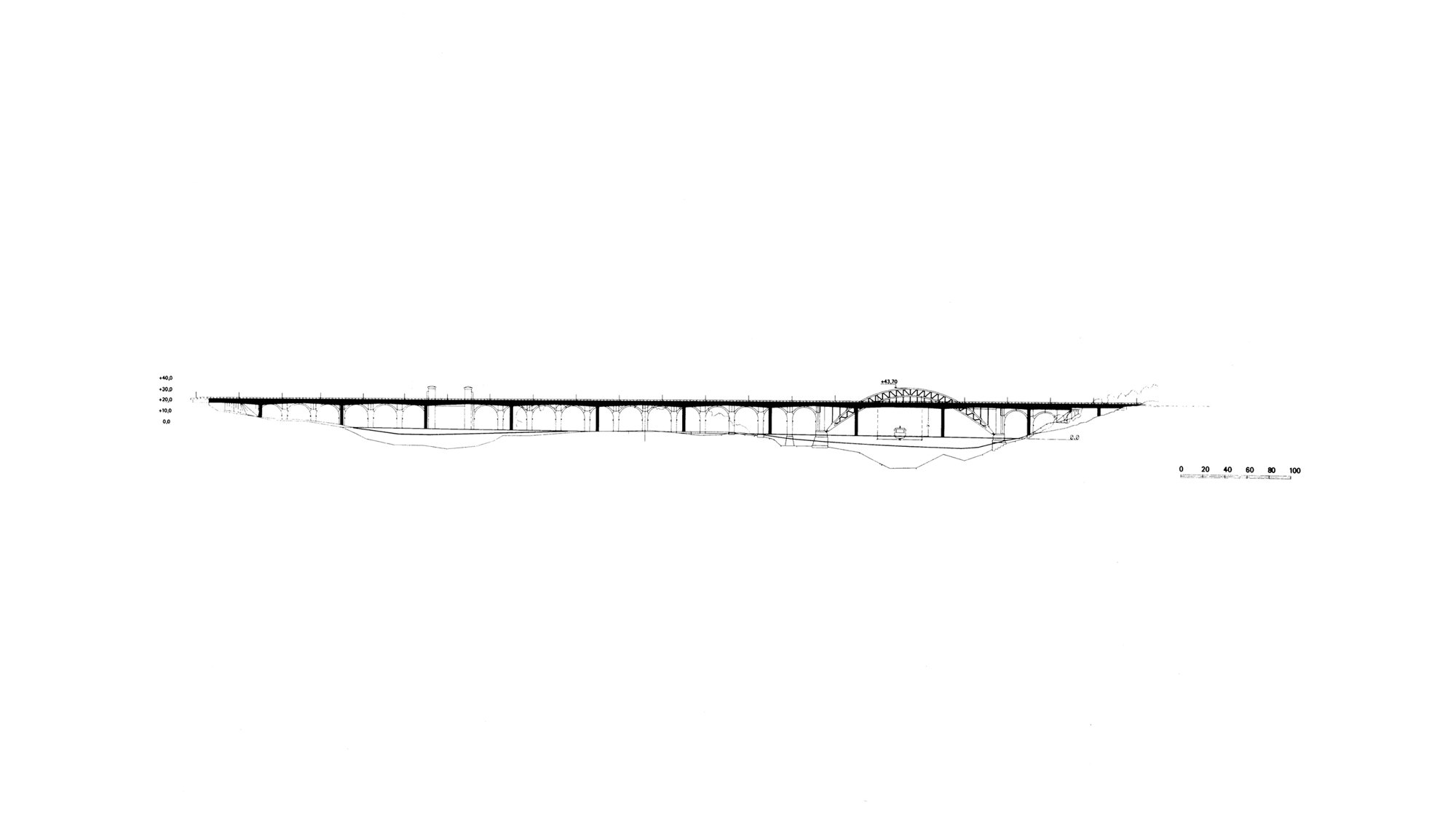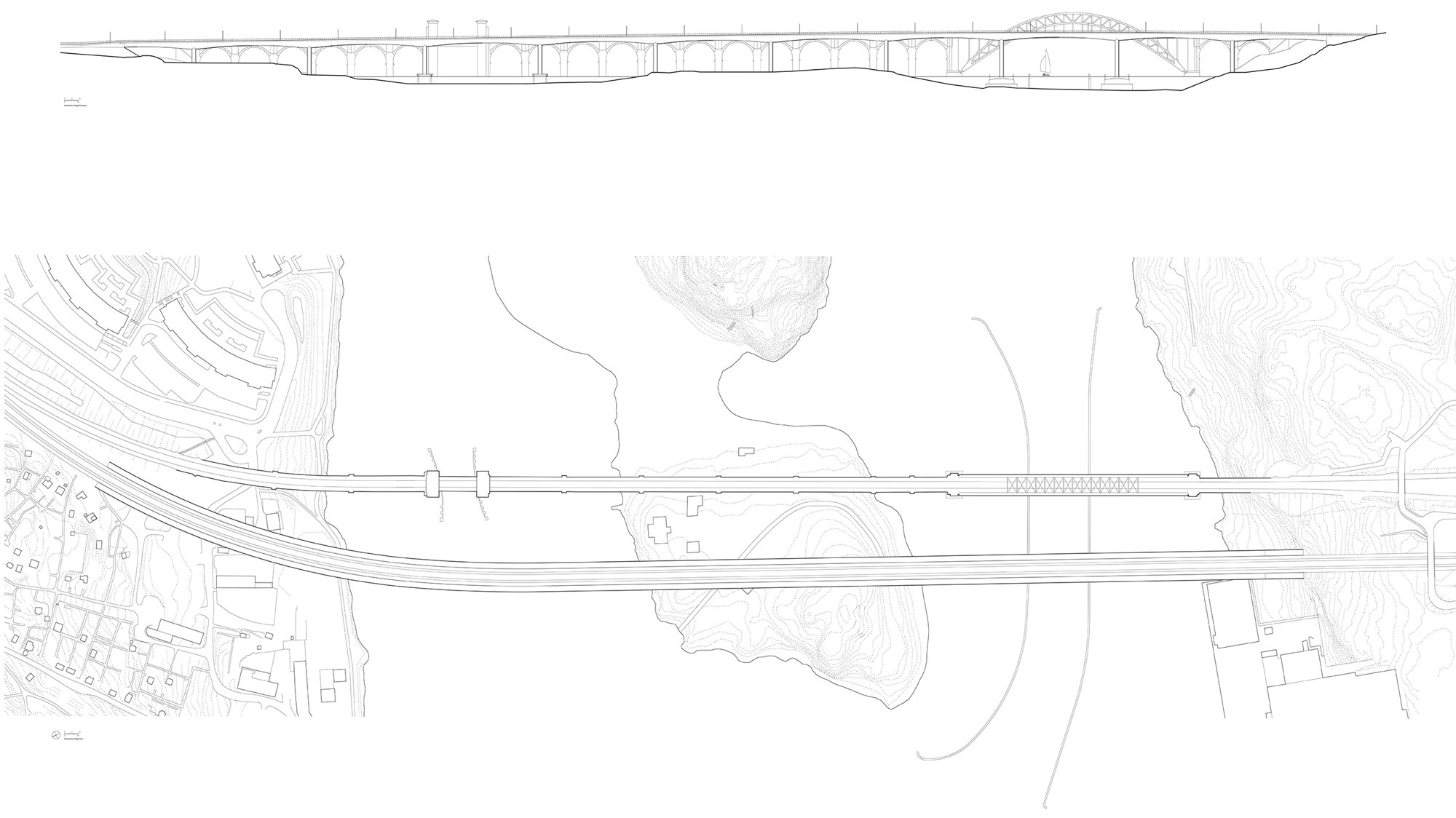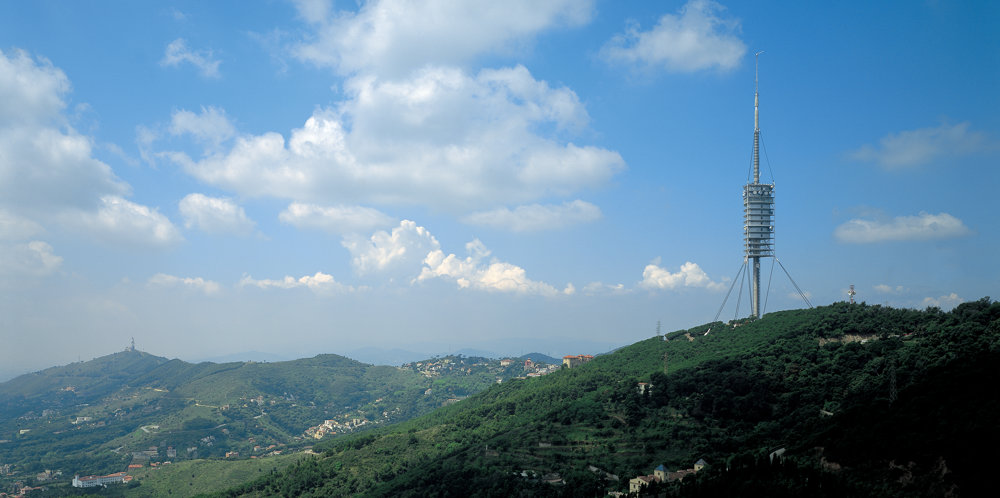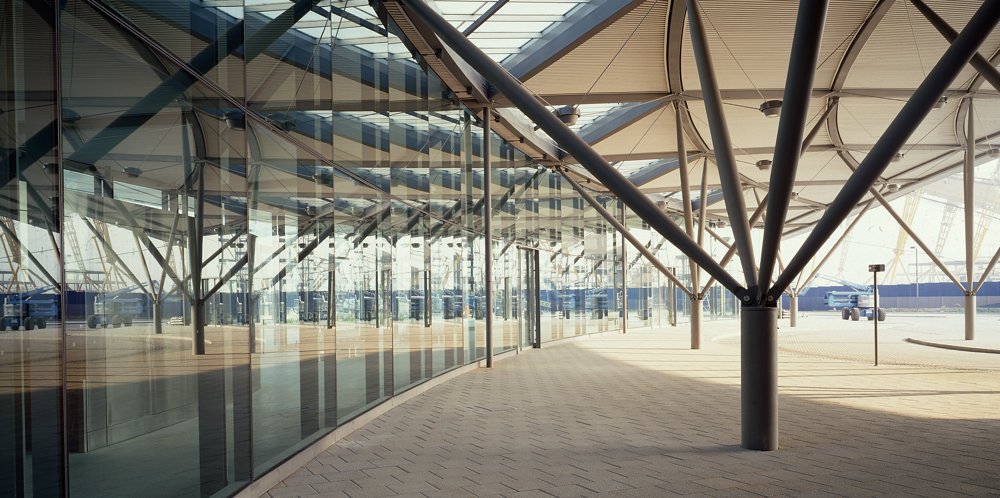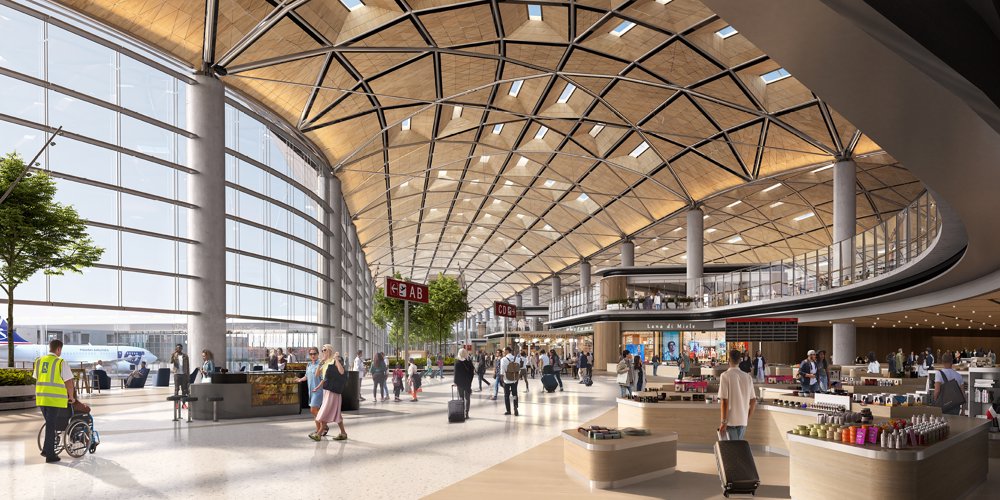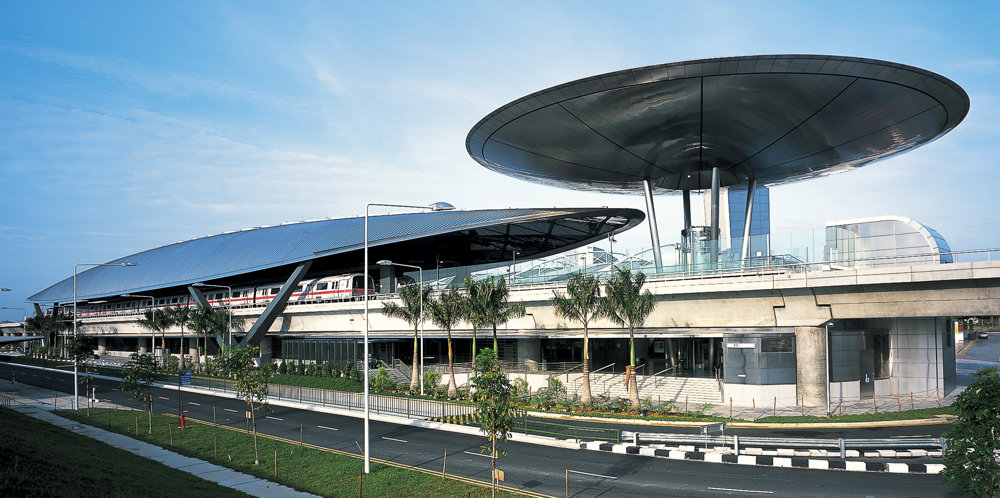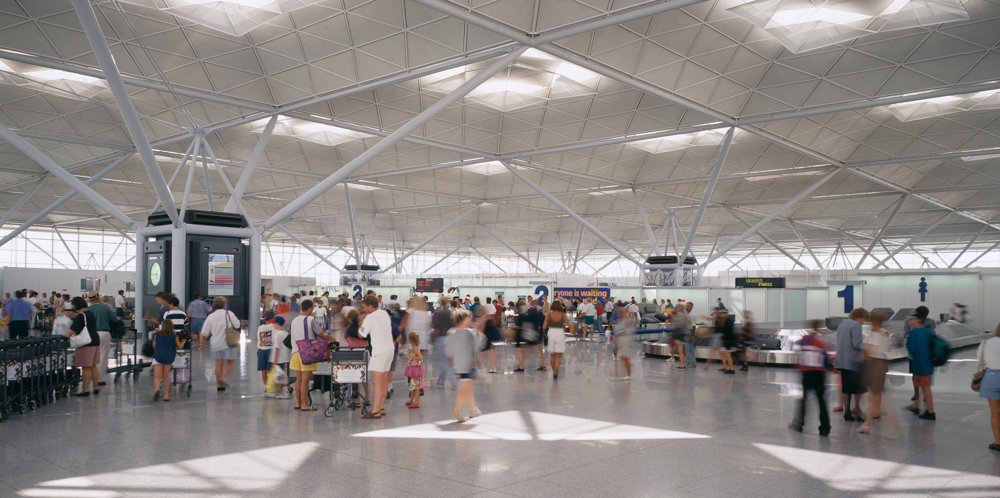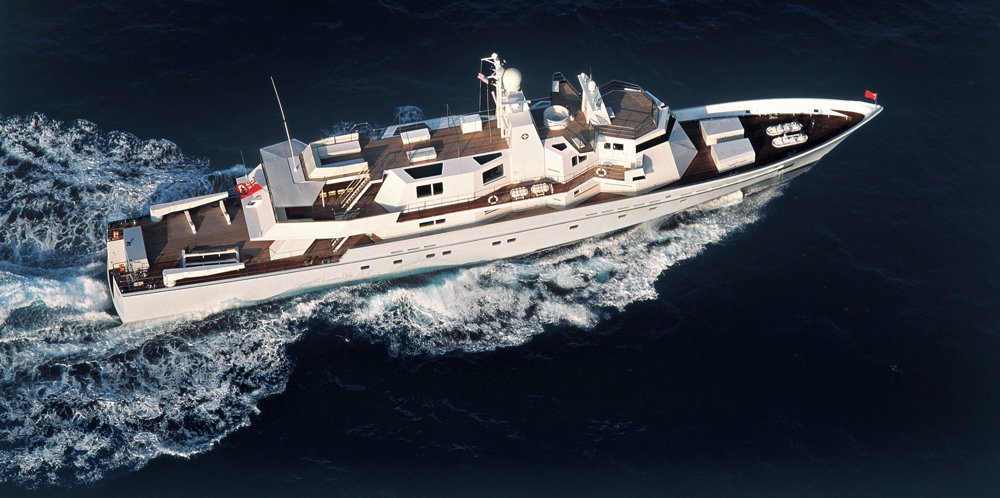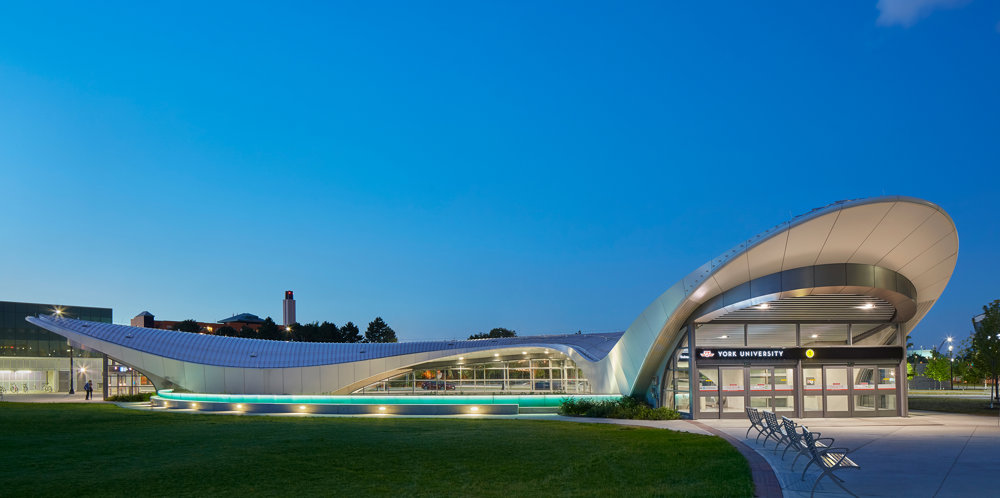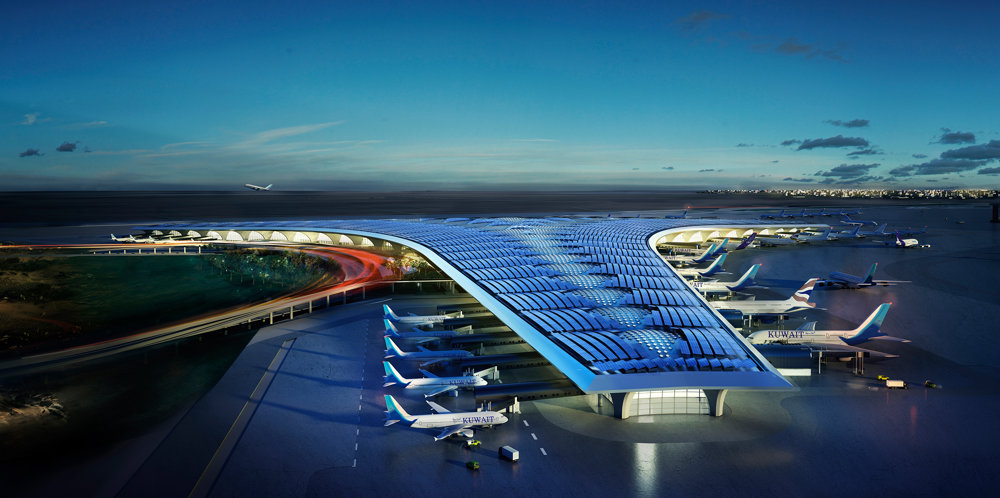Stockholms Arsta Bridge marks an historic moment in the expansion and modernisation of Swedens rail network, the elegant bridge sweeps across the lush Arstaviken bay, its rhythmic contours interacting with the existing 1929 bridge. The organic wave form is a sensitive response to the surrounding landscape and the vibrant red pigment of the concrete resonates with the Falu-red timber used in Stockholms traditional buildings. At 833m long, the bridge will supplement the existing bridge, dramatically increasing capacity with minimal impact on the surrounding landscape.
Following an international competition in 1994, Foster and Partners, together with Ove Arup, were selected to design the new Arsta Bridge, which would incorporate two new train tracks, a pedestrian and cycle way, and a maintenance access road. On plan, the bridge incorporates a curve, and the rounded soffit responds to the sequence of bending forces as the bridge deck sweeps over the ten pier supports, which are elliptical in section. This calming geometry is a response to the tranquillity of the Arstaviken bay, and the bridge appears to recede into the setting.
Referencing traditional building methods, the formwork used to create the rounded soffit was made of solid timber planks. The result is a natural patina on the surface of the concrete, giving the bridge a textural quality, which further enhances its subtle integration with the context. The railway tracks are set down into the top of the deck section, which helps to minimise airborne train noise, as the trough walls are mounted with sound absorbent steel cartridges. In addition, the rails run on cushioning to minimise vibration.
The new Arsta Bridge arrives as regeneration takes place on much of the adjacent brownfield sites overlooking Arstaviken, including a new residential and commercial scheme.









